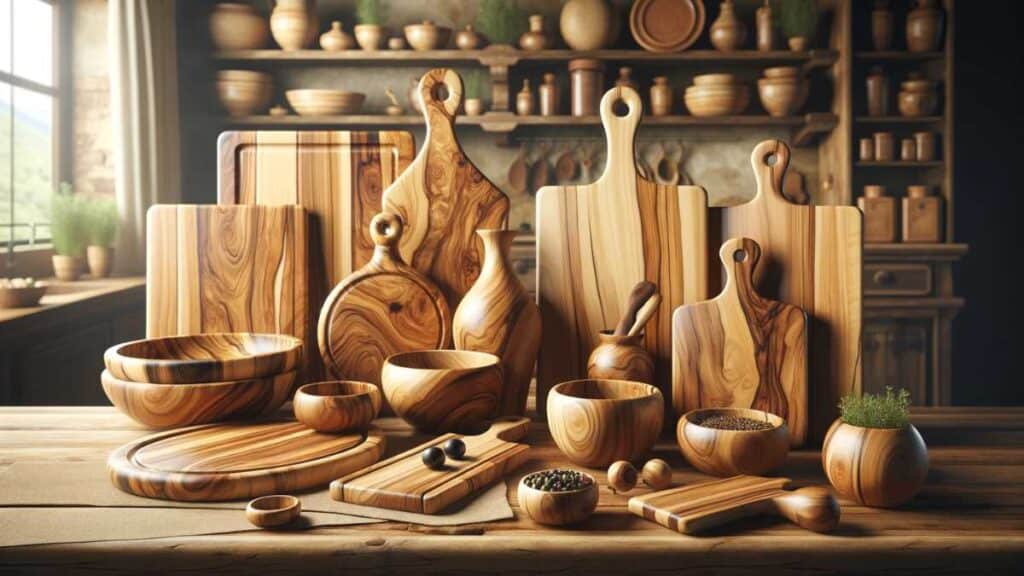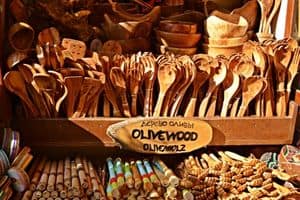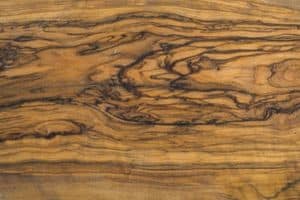How To Care For Olive Wood Products – We’ve Covered Everything
Olive Knowledge is a part of Amazon Associates. As an Amazon Associate, we earn from qualifying purchases. Read our Affiliate Disclosure to learn more.
I have a few products made from olive wood, and in the past, I didn’t take care of them at all. Unfortunately, some of them were ruined because of that.
Then I discovered a proper way of caring for olive wood products, and ever since, all my products made from olive trees look like new, even five years after purchasing them.
In this post, I’ll show you tips and tricks on how to care for different olive wood products.
Tips For Maintaining Products Made from Olive Woods

Here we’re bringing you tips you should follow when caring for and maintaining products made from olive wood.
Taking Care of Olive Wood Kitchenware

Olive wood kitchenware is among the most desirable items on the market. There are various kinds of cooking ware made from olive wood, which includes Bowls, Olive cutting boards, Chopsticks, Cooking spoons, Honey dippers, Kitchen mortars, Ladles, Lemon squeezers, Nutcrackers, Rolling pins, Salad servers, and Spatula.
Wash your item and dry it well:
- For the best results, your olive wood cookware should be hand-washed rather than put in the dishwasher. Use a soft sponge and a light detergent to clean olive wood cookware after using it. Then, rinse it off with warm water and dry it with a soft towel. Olive wood should be hand-dried as opposed to letting it air dry to prevent swelling or warping.
Use mineral oil:
- Your Olive Wood cookware must be oiled depending on how frequently you use it. For the process, use food-safe mineral oil and avoid using olive oil or vegetable oil since they can become rancid. Mineral oil is safe to use because it absorbs quickly and leaves no greasiness on the utensils.
- Use a soft cloth and a little bit of oil to rub the wood all over. Repeat the procedure once more when it has dried. Your utensils should not be used until they are completely dry. After you’ve applied the second layer of oil, it’s typically preferable to let them dry for the entire night.
Sanitizing:
- Sanitizing your Olive wood kitchenware is a surefire technique to stop bacteria from getting onto your food through the wooden cutlery. Combine water and hydrogen peroxide in equal parts to make a solution. Dip a soft cloth into the solution and rub your olive wood to sanitize it. After that, wash it with warm water and pat it dry.
Neutralizing:
- Olive wood can withstand most odors. Retaining the scent for most of the foods won’t be an issue. Rub lemon juice or a paste made of baking soda and water on the exterior to neutralize. This will assist in reducing the odor and getting the utensils’ fragrance back to normal.
Polishing your olive wood:
- It is advised that you occasionally wipe the surface of your olive board with either olive oil or a beeswax solution. Remember to use turpentine-free, food-safe products if you decide to use beeswax. Olive oil reduces dryness, and wax seals the surface to provide protection.
Taking Care of Olive Wood Flooring

Olive wood is also used to make furniture and flooring. But it’s important to handle this wood delicately. Here are some tips for you.
Dust, mop or vacuum your floors:
- Often, vacuum or dust mop your floors to clear off dirt and debris. Use vacuums with soft brush heads, and stay away from beater bars as you clean. Spills should be cleaned up right away using a moist towel to prevent them from remaining on the flooring for too long.
- Olive wood flooring shouldn’t be wet mopped, and harsh cleaning agents like ammonia, abrasive cleaners, or bleach should be avoided. Use only the products the dealer suggests.
Use door mats:
- Place the mats close to entry doors to reduce the quantity of dirt tracked in from the outdoors. Small rugs should be placed in high foot traffic places that are prone to spills and moisture, such as in front of your stove or sink or next to a pet’s water bowl. Rubber-backed mats and rugs should not be used as they tend to retain moisture.
Put furniture pads on:
- To prevent heavy appliances or furniture legs from denting the wood, attach furniture pads to each of their legs. Cover the floor with thin plywood if you need to move heavy furniture or appliances across it.
- Avoid wearing sports shoes with cleats or spikes or wearing high heels when walking across the floor. To avoid scratching, regularly trim your pet’s nails.
How To Take Care of Olive Wood Carvings

Whether they are modern art pieces or family heirlooms, olive wood carvings require regular maintenance to keep their color, brilliance, and longevity.
Dust off the olive wood carvings:
- Use a moist microfiber cloth to dust your wood carvings gently. You only need to use a small amount of water to clean up any extra dust from your wood carving. This will be sufficient for this step. After removing all extra dust, let your wood carving air-dry.
Use mineral oil:
- Apply high-quality mineral oil on a different clean cotton cloth. Although it doesn’t have to be flowing from the fabric, put enough mineral oil to cover the cloth. Make sure the mineral oil you use on your olive wood carving is food-grade level, and avoid using vegetable or olive oil on it. With the oil-soaked cloth, clean the entire wood carving. Prior to touching or using the wood carving, let it dry.
Repeat the process:
- Every three to six months, or whenever the wood carvings appear or feel dry or flaky, repeat the mineral oil treatment.
Frequently Asked Questions
As with most wood products, you should apply a thin coat of oil to your olive wood utensils to keep them healthy.
The ideal oil to use for caring for your olive wood products is mineral oil. Mineral Oil nourishes and preserves the wood, keeping it from drying out or cracking and halting the development of microorganisms.
Keep in mind to re-season your olive wood roughly once every month. Simply use some food-safe mineral oil on a clean rag and rub in circular motions, just like you would with the original seasoning.
Avoid using vegetable or olive oil because these products can go rancid.
Applying a little mineral oil that is safe for eating occasionally will treat olive and acacia wood. A kitchen towel or lint-free cloth should be used to rub a little amount of oil onto the wood.
Olive wood’s heartwood typically has contrasting streaks of darker brown or black color running through it. With time, the color will deepen and acquire shades of bronze and grey.
Yes, with a very fine weaving, it is hard, solid, uniform, and wood-worm resistant.
Final Words
Olive wood is not only elegant but also a renewable resource. Olive trees can live for several hundred years. Products made from olive wood do need some upkeep, but it’s not too difficult.
Olive wood creatures must be protected against excessive temperature swings, humidity, cold, and heat. I hope these tips are helpful and you enjoy your olive wood for years to come.
Similar Posts:

